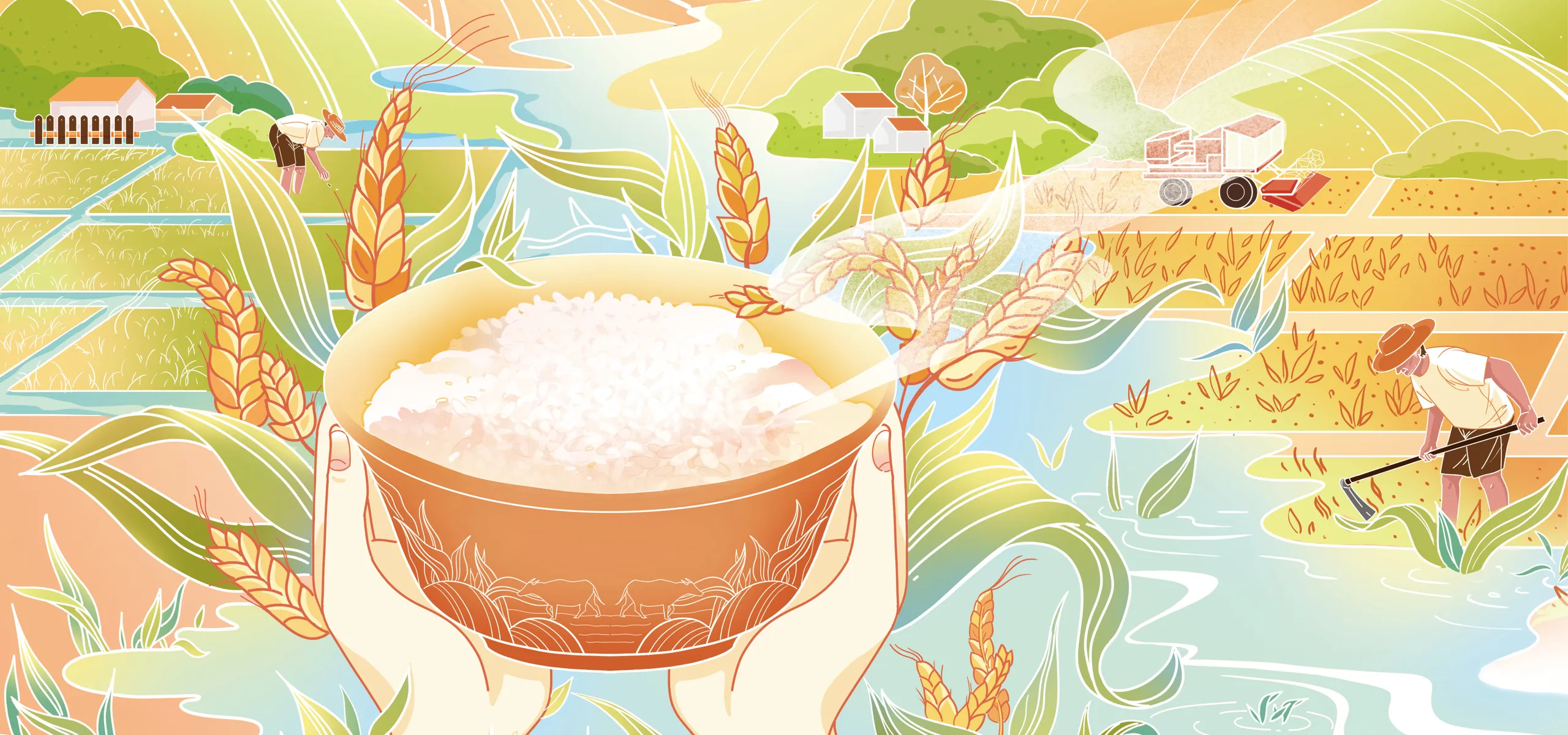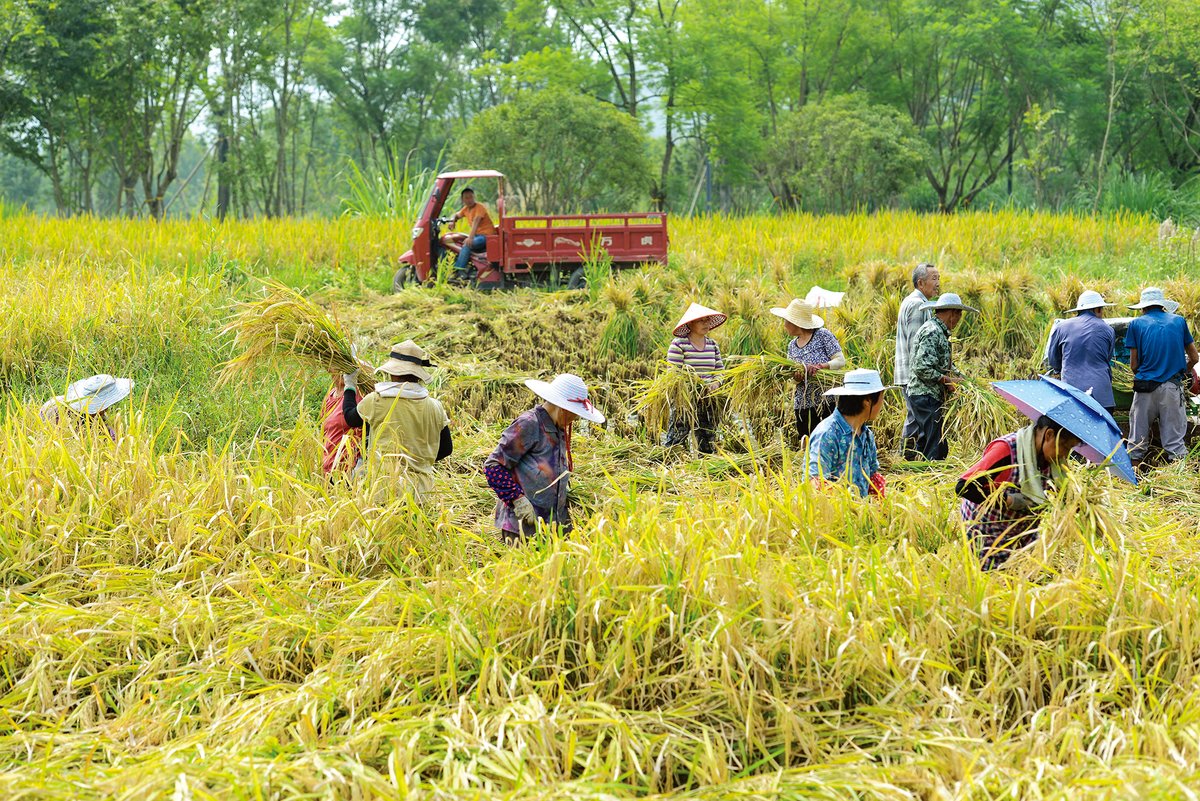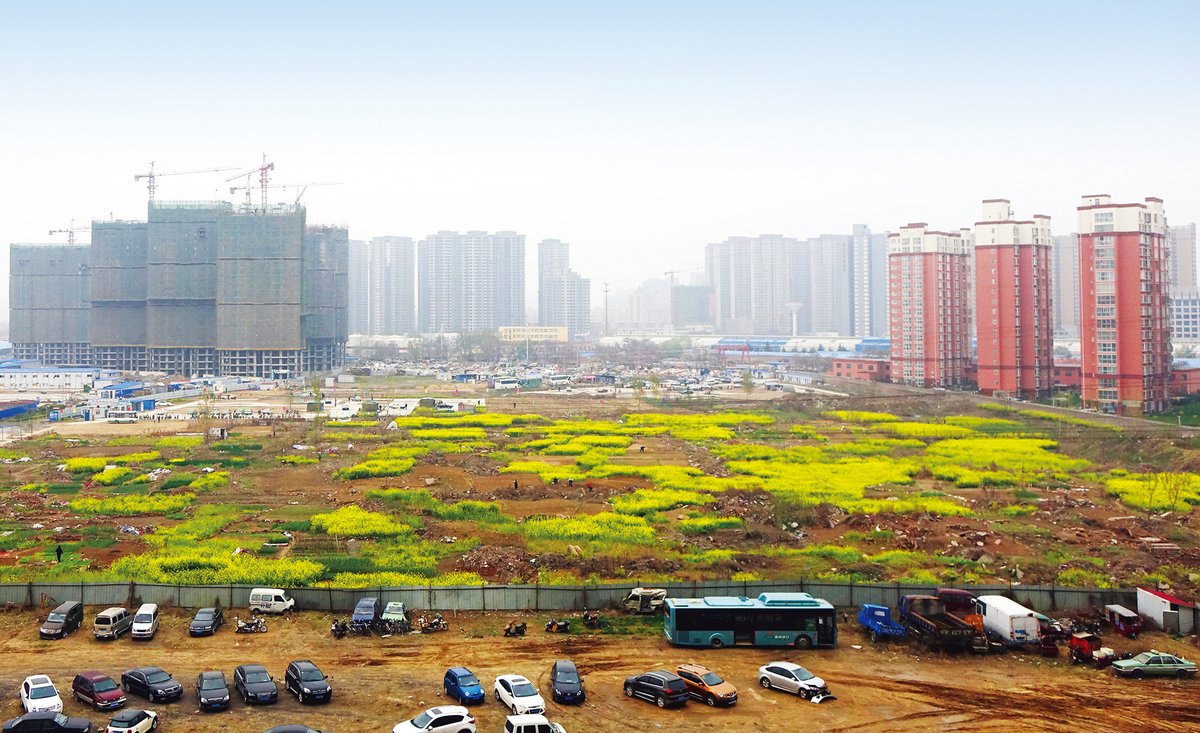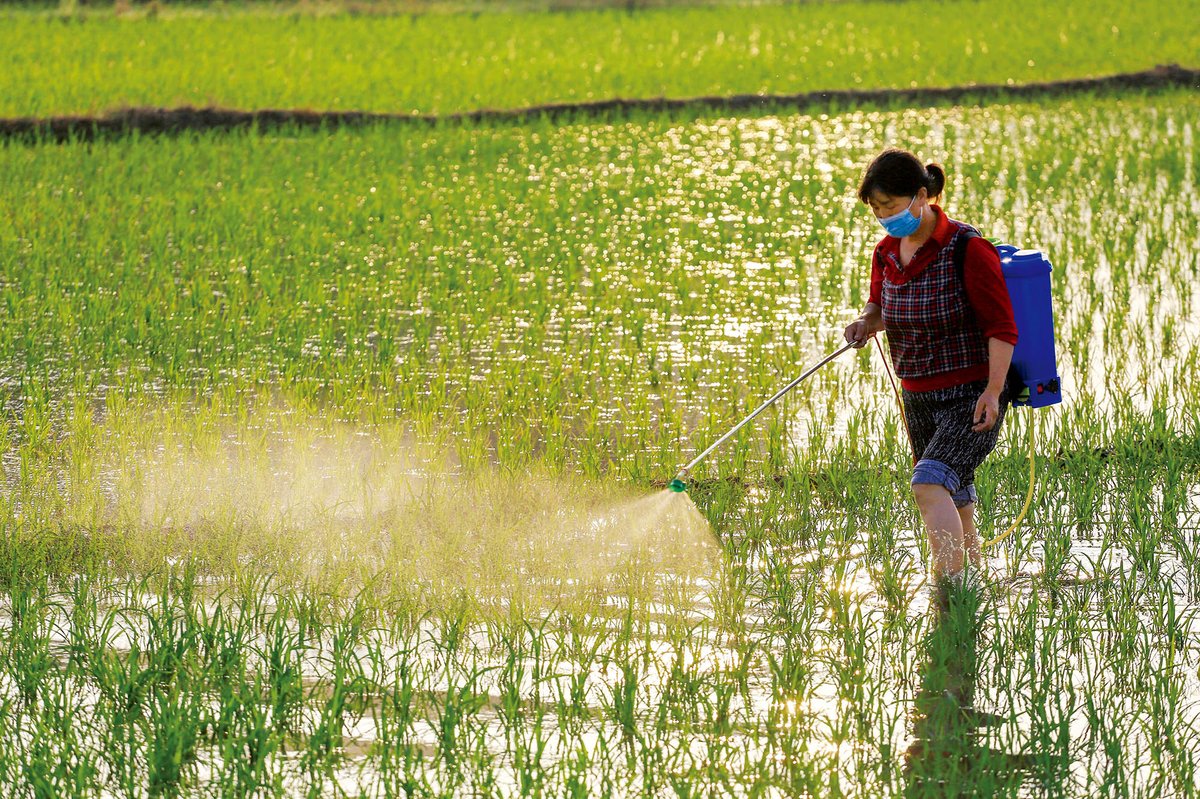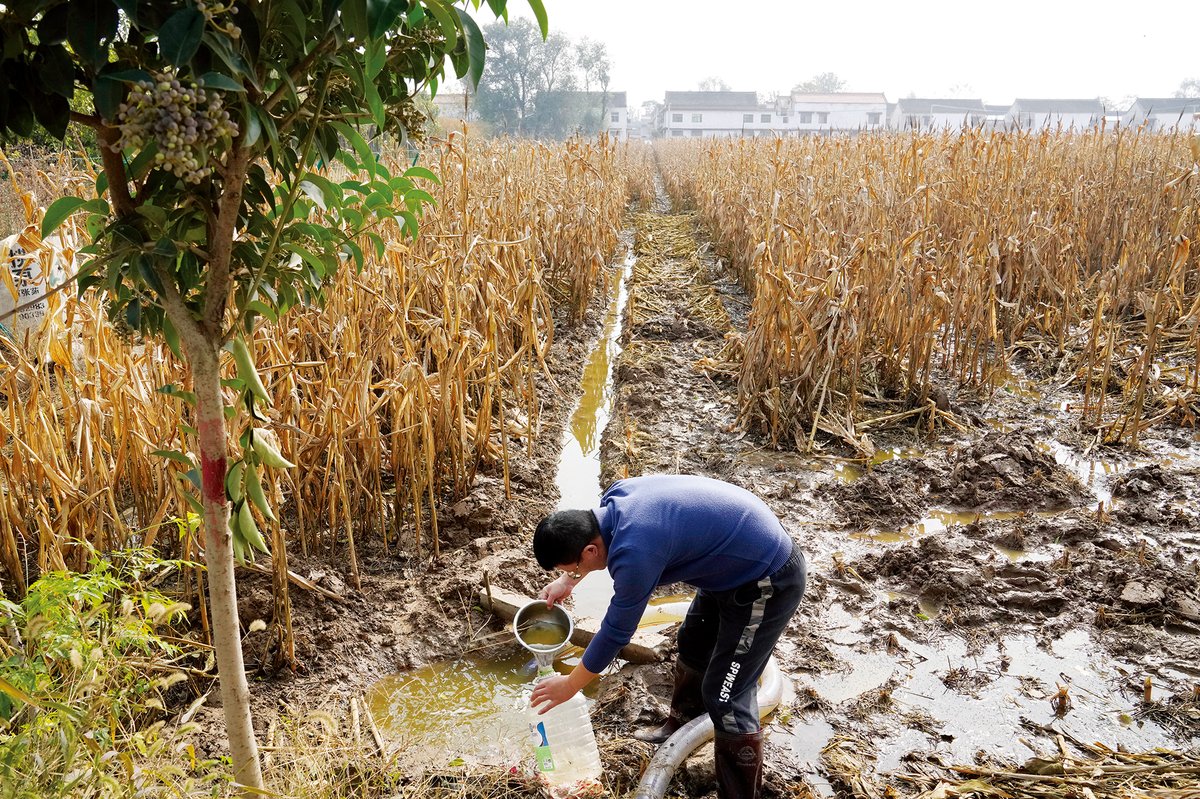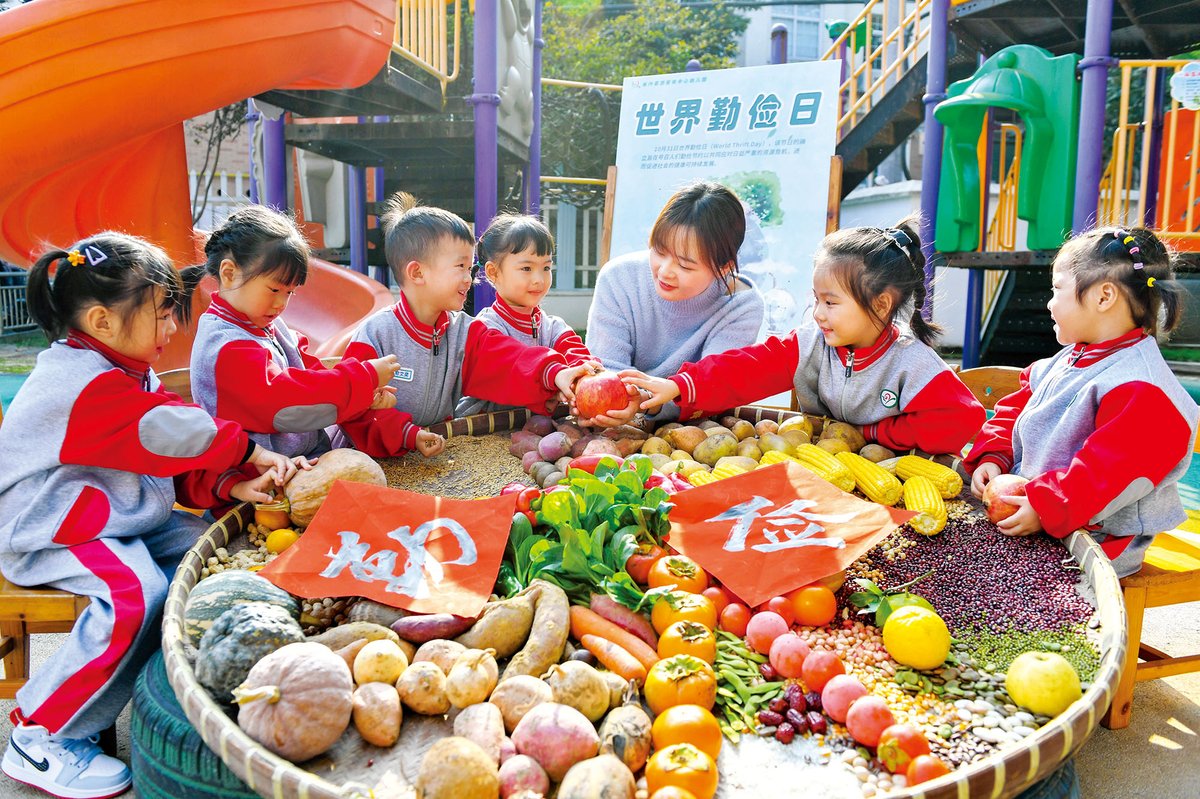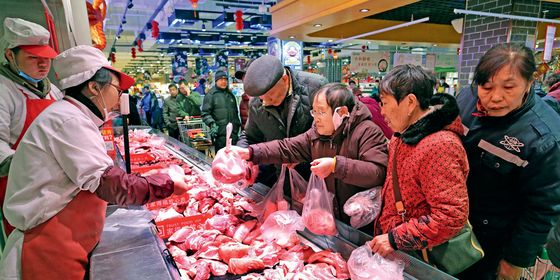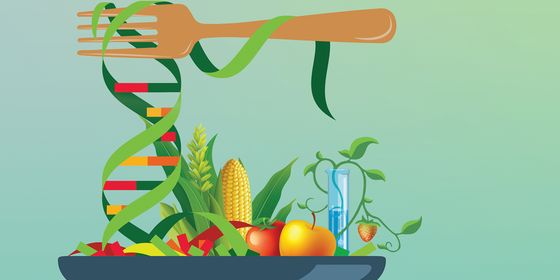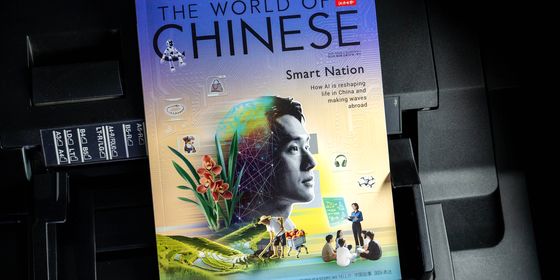With Covid-19 affecting domestic farming and global food supplies, can China ever reach its goal of food security?
As farmers headed to their fields of golden ripe wheat near Zhumadian in central China’s Henan province this June, the village Party secretary wasn’t far behind.
In a viral video posted on Weibo on June 22, the secretary berates a farmer who has just begun harvesting his crops: “Get a Covid test!” he roars, as a crowd of villagers watch on. “You can’t harvest until you’ve got one!” Sickle in hand, the farmer retorts: “It’s already ripe, how can I not harvest it?” The official persists until eventually the exasperated farmer leaves the scene with the words, “Fine, then you do it yourself!”
Since the pandemic began, Covid-19 has been more than just a strain on the country’s medical system and the livelihoods of ordinary people: It has placed huge pressure on China’s whole agricultural sector, threatening the country’s food production and distribution networks. When the northeastern Jilin province, the country’s second-biggest corn producer and fifth biggest producer of all grains, imposed travel restrictions and months-long lockdowns to battle its worst Covid-19 outbreak this spring, farmers reported being unable to go out into their fields, while many who worked in the cities in the off-seasons weren’t able to return to their hometowns for planting.
These challenges have affected consumers too—in November last year, China’s Ministry of Commerce encouraged families to stockpile daily necessities for the winter, sparking fears that food shortages were on the horizon. And in Shanghai, which entered a months-long citywide lockdown at the beginning of April this year, residents struggled to get food, and even resorted to bartering for daily necessities, as supply chains broke down.
For most of China’s population, food scarcity during wars and the “three years of starvation” in the mid-20th century are distant memories today—if they even remember it at all. Yet food security has never been off the national agenda, and China’s leaders are keen to make the country self-sufficient in food production as the pandemic disrupts international supply chains, countries start banning exports on vital foodstuffs, and China’s diplomatic relations deteriorate with several major food trading partners.
Feeding 20 percent of the world’s population on 7 percent of its arable land, and perhaps only 5 percent of its water resources, poses a massive challenge. Urbanization and industrialization, an agricultural system dominated by small household farms, deteriorating ecological resources, and increasing food consumption levels all make competing demands, while new goals to increase self-sufficiency sometimes contradict the country’s long-term agricultural sustainability.
Food production in China has soared over the last three decades as farms have become increasingly mechanized and productive. The country’s grain production rose from 430 million tons in 2003 to 682.9 million in 2021. Under China’s 14th Five Year Plan, which runs to 2025, the country intends to maintain annual grain production of 650 million tons.
Yet growing incomes have caused consumption to also rise sharply. In 1980, the Chinese consumer ate an average of 2,163 kilocalories a day, but that rose to 3,200 kilocalories by 2018 according to the UN Food and Agricultural Organization, higher than the likes of Japan and New Zealand. China is also the largest meat consumer (though not the largest per capita) in the world.
According to the Global Food Index, which ranks countries on their food security, China ranked second in the world in 2021 for the “availability” of food in the country, but it placed 34th overall for “food security,” which takes into account the affordability of food, resilience of agricultural production, and food safety.
For farmers, rising costs are a serious impediment to answering the country’s call to increase production, and to earning a livelihood. Shen Baolu, a 64-year-old farmer in Anyang, Henan province, works his 20 mu (1.33 hectare) plot of land alone “for basically no income,” despite using more machinery in recent years. “The harvests have definitely become larger than before, but the costs have gone up too,” Shen tells TWOC. “Us common folk are suffering.”
Input costs for fertilizer, manpower, and land rents have risen sharply in the last two years. Wang Fengjiang, a rice farmer in Liming village, Jilin province, has been farming for over 20 years on the two hectares that belong to his family, in addition to around four hectares that he contracted from other villagers this year. Those contracting fees have risen from over 8,000 yuan per shang (a unit of measurement used in Northeast China equal to 15 mu or roughly one hectare) in 2016, to 11,000 yuan this year. Wang tells TWOC the price of fertilizer has doubled over the last few years, while wages for the three to five laborers he occasionally hires to help with harvesting have almost doubled as well. The price for rice, meanwhile, has fallen.
As a result of these shrinking margins, he plants less: just six hectares compared to the 20 hectares he farmed in 2018. “I normally farm 80 to 90 mu, but sometimes I feel exhausted and only do 30 to 40 mu,” Wang tells TWOC, explaining that the extra effort is not worth the limited returns. During the spring planting and autumn harvest seasons, each spanning one month, he sometimes leaves for the fields at 3 a.m. and works for 12 or 13 hours a day. “I work until my waist is sore and my back aches.”
These financial struggles come despite China’s Ministry of Agriculture and Rural Affairs (MARA) giving over 289 billion US dollars in subsidies to agricultural producers in 2021, according to the Organization for Economic Cooperation and Development, far more than the 98 billion dollars and 53 billion dollars the EU and US gave to their farmers in the same year. China’s subsidies are meant to help farmers make a living and encourage them to plant staple grain products the government deems strategic, rather than more lucrative cash crops like fruit and vegetables.
But even with cash incentives, Shen finds his wheat and corn are rarely profitable, and the payments are becoming less reliable. “I get 80 yuan per mu of land. Before, they used to give it to us very promptly, but now it’s very delayed. After a whole year’s worth of planting, you get to the next year and they still haven’t given it,” he complains, calling it a “pitiful” amount anyway.
The government also sets minimum prices for the purchase of strategic grains, but these are so low that Wang says it’s the “equivalent to working for nothing.”
Getting buy-in from farmers is a significant stumbling block for China’s strategic food reserves. “You can’t just expect the farmers to foot the bill for the country’s food security,” argues Dr. Zhang Hongzhou, a research fellow at Nanyang Technological University in Singapore and author of the 2018 book Securing the Rice Bowl: China and Global Food Security. “Staple [grains] are not profitable at all. Basically…when the farmers produce wheat, they suffer losses even with the government subsidies.”
After declining steadily from 2015 to 2019, agricultural subsidies have ramped up significantly during the pandemic. Shandong province, for example, paid grain farmers a collective one-off subsidy of 1.53 billion yuan in 2021. But a wider concern with food security has preoccupied China’s rulers even since ancient times: leaders who provided adequate food supplies often enjoyed more political legitimacy, Zhang argues.
In more recent times, memories of food shortages and famines throughout the 20th century live on for many, “including China’s current leaders,” Zhang says, explaining why food security has come to occupy such an important place in Chinese policymaking. Even now, with food much easier to come by, Zhang recalls that his grandparents, who migrated from Henan to Shaanxi in the 1950s viewed “wasting grain as a crime,” and would pick up food dropped on the floor without hesitation. “They cherished food.”
Shen, who grew up as one of five children in the 1950s and 60s, remembers that when he was a child “people were all skinny because they didn’t have enough to eat, and then they had to work the fields, which took a lot [of energy].” Shen and his family ate a diet mainly of “sweet potatoes, pumpkin, and steamed buns.” Only at the Lunar New Year would they eat meat, he says, remembering that “when we cooked, we would dip a chopstick in the cooking oil and just put one or two drops [in the pan].”
“Of course, we cherished food, because we came from a very poor time, and I taught my children to save food too,” Shen continues. “We don’t leave any grain or food left over; we make sure to eat it all…otherwise I feel like it’s a waste.” Nowadays, Shen believes, younger generations are less concerned with cleaning their plates.
China’s policy makers are similarly concerned with ensuring food supplies. In 2006, as part of the 11th Five Year Plan, the country established a “red line” level of arable land (set at 1.8 billion mu or 120 million hectares) that the country must maintain, even as urbanization and industrialization progress rapidly. That red line has held, but only just. The amount of arable land decreased from 2.03 billion mu in 2009, to 1.91 billion mu in 2019, according to official figures.
Declining levels of arable land, mainly due to its conversion to other uses (urban, industrial, or woodland), is a severe problem, particularly in more developed regions where cities are still expanding fast. For much of the last two decades, selling off land to real estate developers has also been a quick vehicle for local governments to raise funds. But “the biggest threat to our food security and food safety is large-scale overuse of cultivated land,” Li Renqing, general secretary of the Chinese Academy of Sciences Agricultural Society Research Center, told China News Weekly in June this year.
In particular, the use of chemical fertilizers, which has tripled in the past three decades, has degraded the quality of China’s soil, making it more difficult or even impossible to grow crops in it. A team led by Weng Boqi, a researcher at Fujian Academy of Agricultural Sciences, found that nearly a fifth of China’s arable land (19.5 million hectares) is strongly acidic. Meanwhile, intensive irrigation has led to salination of soil in drier regions, already affecting 660 million mu (44 million hectares), a third of China’s arable land, according to state broadcaster CCTV.
“We hear about China’s ‘grain miracle,’ how China was able to feed over 20 percent of the world’s population with only 7 percent of the arable land. The other half of the story is that China uses about 35 percent of global fertilizer and pesticide, or even higher,” says Zhang. This use of chemicals affects water supplies too, already scarce in much of China.
Over the last few decades, grain production has gradually been moving north in China, as the south and east have become more urbanized and industrialized. But the north is far drier than the south, meaning intensive irrigation is necessary. While China’s per capita water supply is only around 25 percent of the world’s average, irrigation of crops takes up 60 percent of the country’s total water demand. But in 2018, the Ministry of Ecology and Environment found over 15 percent of China’s groundwater was too polluted even for agricultural use.
The government has been trying to reduce the use of chemical fertilizers and pesticides for years as well as making efforts to improve the amount of “high quality” cultivated land in the country, while also launching the South-to-North Water Diversion Project in 2002 to transfer water across the country at an estimated cost of 62 billion US dollars. In 1996, the Ministry of Land and Resources, replaced by the Ministry of Natural Resources in 2018, began systematically assessing the quality of the country’s soil with every city required to file annual reports. MARA set a target of adding 6.66 million hectares of “high quality farmland” this year. Pilot projects using rice seeds that can be planted in seawater have also been trialed in eastern parts of the country in the hope this can solve some water scarcity issues in the country.
According to Tan Xiaoming, a rice farmer in Qidong county, Hunan province, more efficient pesticides means that while he used to have to spray his rice fields five or six times a year, now they only need spraying twice. Wang, however, feels things are getting worse. “The insect and pest problem has gotten bigger,” he tells TWOC, fresh from a six-hour session of spraying pesticides. He also believes that another policy, which stops farmers from burning leftover straw in fields in order to reduce air pollution, causes the straw to rot, seep into the soil, and create fertile breeding grounds for more pests.
The weather can be another menace too, and one that is becoming more unpredictable. “In 2021, there was a flood. I didn’t get a penny from the corn I planted,” says Shen, whose fields were destroyed. Tan tells TWOC that he planted a dozen oil seed camellia trees last year on part of his small plot of less than half a hectare, but they failed to bloom because of a long period of drought. In the 2013 to 2014 season, Wang recalls making almost no profit because of flooding and hailstorms which damaged his rice crop: “Normally one shang can yield 9,000 kilograms, [but] because of the hail we only got 7,000 to 8,000.”
Last summer, severe floods in Henan province damaged 2.4 million acres of crops, with nearly half of the affected fields seeing yields fall 30 percent as a result. This year too, severe flooding in the south damaged over 39,000 hectares of rice paddies, while record high temperatures this summer threatened corn production in the north and central regions of the country. In 2020, researchers at Peking University and the International Food Policy Research Institute predicted that under the worst climate change scenario—a global rise in average temperature of around 4.3 degrees Celsius by 2100—wheat yields in China would decline by 9.4 percent by 2050 without mitigating measures.
For farmer Wang, everything depends on the weather. “We rely on the heavens to eat,” he says. “This year I planted over 90 mu [6 hectares], I don’t know what the harvest will be like…there may be hailstorms...It depends on God.”
With such uncertainty and rising costs, farmers are increasingly looking for alternative livelihoods or hardier, more cost-effective crops, further complicating government efforts to increase grain production. Zhang’s parents used to grow corn in their farm in Shaanxi, but they switched to kiwifruits in the 1990s because it was more profitable. Their small 0.7 hectare plot of land is located in what was once a major wheat-growing area, but “right now, no one in my hometown grows wheat,” Zhang says. His parents can earn around 10 times more for their kiwi harvest each year, despite much higher input costs, compared to planting wheat.
One reason why it’s hard to profit from grain-farming is the extreme fragmentation of China’s agricultural sector: consisting of around 200 million small family farms averaging less than one hectare in area (compared to just over 2 million farms averaging 180 hectares in the US). This makes the use of machinery impractical on many farms, while farmers spend more on seedlings and equipment because they can’t buy in bulk. Furthermore, since rural land is owned collectively by villages, and can only be leased for limited periods rather than sold, scaling up farms remains a difficult and unprofitable process.
Shen’s two daughters and one son, all between 30 and 40 years old now, all left the village after middle school and went to work in textile factories and construction sites. “I hope they don’t take up farming…there’s no future in farming at home,” he says.
Likewise, Tan’s two sons, now 30 and 20 years old, “have basically never done farm work.” After graduating from vocational middle school, they went to work in the prosperous Pearl River Delta region. Wang’s son is 22 and is studying to be a high-speed rail attendant in Jilin’s provincial capital, Changchun. “He doesn’t have basic knowledge about [farming],” says Wang. “But also, in our village, there’s not one person from his generation at home farming.”
Wang has considered leaving the fields himself. Last autumn before the harvest, he worked at a construction site in town for two months for 200 yuan a day—but the boss ran off with the money, leaving Wang to return to farming, for now. Urbanization has seen millions move from rural areas to the cities, leaving fewer people to work the fields and some land idle. Now nearly 65 percent of China’s population live in cities, while only around 260 million people still actively work in the fields, many of them elderly. What this means for the future of farming is unclear.
Technology could provide some solutions. Genetically modified organisms (GMOs) can be more efficient and give higher-yield crops with less labor and chemical-use, but the Chinese public is strongly opposed to their use, with many suspicious they might cause health problems (despite overwhelming scientific evidence that they are safe), and as yet no GMO crops have been approved for commercial planting in China.
China is also investing heavily in biotechnologies like seed research. “With these new technologies, there’s a chance that you can use less input to produce more,” says Zhang, “But there’s no guarantee it will happen, and no one knows how long the transition will take.”
Preventing waste would help. A 2015 report by the Chinese Academy of Sciences found that residents of the country’s largest cities, including Beijing and Shanghai, wasted 17 to 18 million tons of food a year, while another paper by researchers at the Chinese Academy of Agricultural Sciences in the same year found 35 billion kilograms of food in China is lost during transportation, processing, and storage. An anti-food waste law, enacted in April 2021, stipulates fines of up to 10,000 yuan for restaurants that encourage customers to over-order or cause “obvious waste,” while banning competitive and binge-eating content online and in other media.
Another solution would be to import more from abroad. China’s imports have grown over the last few decades, with the country becoming a net importer of corn, for example, in 2010. In 2013, there appeared to be an acknowledgement that total self-sufficiency was unfeasible, with the need for “domestic supply with moderate imports” introduced in official documents. But the Covid-19 pandemic, as well as deteriorating relations between China and major food providers such as the US, Australia, and Canada, has seen a reversal. The government hopes to develop a “Food Silk Road” to diversify food imports from regions like Africa and Latin America, but this will struggle to make up the shortfall from agricultural giants like the US.
Zhang argues becoming totally self-sufficient is “impossible” in part because China simply doesn’t have enough land to produce all the crops it needs. With challenges aplenty, no piece of land can be left unfarmed. Farmer Tan says that in the past two years, the government has called on everyone to plant the fields and not to let any go to waste. Tan has also begun receiving additional subsidies in this period for seeds, rice planting, and to not abandon arable land, though he claims this only amounts to a few dozen yuan per mu.
Tan worries that “if farmland falls into decay, once there’s a natural disaster or a war, the country will face a serious food crisis. I think [villagers] who are still healthy will still farm, even if not much, just enough for themselves to eat.”
In some areas, the pandemic has shown the effects that letting the land lie unfarmed can have in China. At least in this regard, Wang has been comparatively lucky: He only needs to take a nucleic acid test every three days and he’s free to work his fields as normal. “When the virus is prevalent, they make us stay home, but if it’s spring planting time, they have to open up,” says Wang. “If no one is planting, where will the food come from?”
Additional reporting by Tan Yunfei (谭云飞) and Chen Yuanzhu (陈远瞩)
Protecting the Rice Bowl: China’s Relentless Quest for Food Security is a story from our issue, “Public Affairs.” To read the entire issue, become a subscriber and receive the full magazine.





